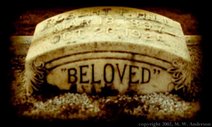STYLE
If you want to get a sense of Ellison's style, listen to some good Jazz music- preferably nothing involving John Tesh- Louis Armstrong would be a much better choice. Ellison has the poetic flow of Jazz, with repeating themes within the composition. Musicians of the class- is theme the correct word here? Help me out. He was very much inspired by the body of literature written during the Harlem Renaissance, and his style shows this influence. The musicality of his writing is also revealed in his love of sound devices, such as alliteration and anaphora (repetition of a word or phrase at the beginning of a sentence); he uses these as well as similes and metaphors to illustrate some of his significant points/ideas.
SOME THEMES
Alienation of African Americans in a "free" society
How race is used as a tool of power- on multiple levels
The consequences of racism- external and internalized
Double consciousness
Hypocrisy and corruption in society
SETTING
Harlem in the 1930's. Descriptions of housing, public transportaion, and working conditions, the college the narrator attends (as well as the trip around the city and the Golden Day) accurately reflect the time period. Ellision also illustrates problems in racial relations of the time period, such as: the taboo of white-black romantic relationships, black power figures are perceived by other blacks as being in a conspiracy with whites, stereotypical dolls and images of blacks, advantages and disadvantages of the Communist part in American (Brotherhood), and conflicts between the assimilationists and separatists within the black community.
PLOT STRUCTURE
Invisible Man is a picaresque novel- characteristics include: a first person narrator who is somewhat naive, a sympathetic anti-hero. The novel is told in episodes and flashbacks, while the narrator's experiences take him to many locations and levels of society. Because the narrator is naive, the reader must infer the author's social commentary. Other examples of picaresque novels: Cervantes' Don Quixote, Henry Fielding's A History of Tom Jones, Voltaire's Candide, Defoe's Moll Flanders, Twain's The Adventures of Huckleberry Finn, Kerouac's On the Road, Salinger's The Catcher in the Rye.
*The background information is adapted from an AP guide to the novel. Hope this helps!
Subscribe to:
Post Comments (Atom)

About Me
- Mrs. Heartz
- Bedford High School English teacher
Blog Archive
-
▼
2007
(38)
-
▼
July
(12)
- Chapters 12-13: Disorientation, Sweet Potatoes, & ...
- Chapters 10 & 11: The Whitewashing of America?
- Chapters 8-9: Go North, Young Man!
- Codebreakers Wanted! Making Symbols "Visible"
- Chapters 6 and Beyond: When One Door Closes...
- Chapter Five: The Sermon
- Chapter 4: Feelin' the Heat
- Chapter 3: Not-So-Good Times at The Golden Day
- Chapter 2: A Disasterous Road Trip
- Chapter 1: Possible Prompts
- Ellison's Style, Setting, Themes, Plot Structure, ...
- Invisible Man
-
▼
July
(12)
















No comments:
Post a Comment